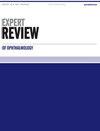Under pressure: keratoconus and intraocular pressure elevation evidence
IF 0.9
Q4 OPHTHALMOLOGY
引用次数: 0
Abstract
I read with great interest the review article recently published by McMonnies [1] regarding eye rubbing-related intra-ocular pressure (IOP) elevation in the development and progression of keratoconus (KC). Although we congratulate the author for highlighting the importance of eye rubbing and KC pathogenesis, some important points that support the primary role of IOP elevation in the context of eye rubbing still need to be considered. First, the relationship between KC and the onset and progression of primary open angle glaucoma (POAG) cannot be observed in a clinical setting [2]. If elevated IOP during rubbing is so relevant in terms of corneal bulging, rubbing would also be expected to damage the optic nerve and retinal fiber layer. In addition, in very asymmetric cases, an eye with severe KC would present an increased cup-to-disc ratio compared to mild or form frustre contralateral eye. Again, this finding has not been observed [3]. The concept of corneal bulging/distention due to IOP forces needs to be investigated. The concept invokes the notion of an increase in surface area occurs via a stretching process [4]. However, this idea is not exactly an accurate description of the morphology of the keratoconic cornea. A true bulge would necessarily dictate an increase in surface area of the cornea, such as in keratoglobus in which the surface expands [5]. In contrast, surface area tends to be conserved to the same degree as in corneas with KC, promoting an isometric type of distortion or warping in the majority of cases. Hence, the flattening seen in the periphery of keratoconic corneas (increased prolateness) corresponds to a coupling effect that compensates for the increase in curvature in the cone region [6]. What happens to a young patient’s cornea when he is subject to constantly elevated IOP? It has been reported that cases of childhood glaucoma corneas have flatter keratometry, greater diameter, and relatively thicker corneas than normal corneas [7,8]. Only a statistically significant increase in posterior corneal elevation in eyes with childhood glaucoma, both unoperated and operated, was found, although no significant difference in anterior corneal elevation and pachymetry was observed [9]. Finally, I agree with the author that eye rubbing is the most important risk factor for KC development and progression (perhaps sine qua non) and causes substantial transient IOP elevation. However, the lack of relationship between KC, POAG, and childhood glaucoma in addition to the morphology of corneal deformation questions the importance of IOP elevation in KC pathogenesis. Funding压力下:圆锥角膜和眼压升高的证据
我饶有兴趣地阅读了McMonnies[1]最近发表的一篇综述文章,该文章涉及圆锥角膜(KC)发展和进展中与揉眼相关的眼压升高。尽管我们祝贺作者强调了揉眼和KC发病机制的重要性,但支持IOP升高在揉眼中的主要作用的一些重要观点仍需考虑。首先,在临床环境中无法观察到KC与原发性开角型青光眼(POAG)的发病和进展之间的关系[2]。如果摩擦过程中眼压升高与角膜膨出密切相关,那么摩擦也会损伤视神经和视网膜纤维层。此外,在非常不对称的情况下,与轻度或截头体形式的对侧眼相比,患有严重KC的眼睛的杯状与盘状比会增加。同样,这一发现尚未得到观察[3]。由于IOP力引起的角膜膨出/扩张的概念需要研究。该概念援引了通过拉伸过程增加表面积的概念[4]。然而,这种想法并不能准确描述圆锥角膜的形态。真正的凸起必然会导致角膜表面积的增加,例如角膜球表面膨胀[5]。相反,表面积往往与KC角膜的表面积保持在相同的程度,在大多数情况下促进了等距类型的扭曲或翘曲。因此,在圆锥角膜周边看到的变平(增加的增生)对应于补偿圆锥区域曲率增加的耦合效应[6]。当一个年轻患者的眼压持续升高时,他的角膜会发生什么?据报道,儿童青光眼角膜的角膜测量术比正常角膜更平坦,直径更大,角膜相对较厚[7,8]。儿童期青光眼患者,无论是未手术的还是手术的,只有统计学上显著的后角膜高度增加,尽管前角膜高度和厚度没有观察到显著差异[9]。最后,我同意作者的观点,即揉眼是KC发展和进展的最重要风险因素(可能是必要条件),并会导致短暂性IOP显著升高。然而,除了角膜变形的形态学外,KC、POAG和儿童期青光眼之间缺乏关系,这也质疑了IOP升高在KC发病机制中的重要性。基金
本文章由计算机程序翻译,如有差异,请以英文原文为准。
求助全文
约1分钟内获得全文
求助全文
来源期刊

Expert Review of Ophthalmology
Health Professions-Optometry
CiteScore
1.40
自引率
0.00%
发文量
39
期刊介绍:
The worldwide problem of visual impairment is set to increase, as we are seeing increased longevity in developed countries. This will produce a crisis in vision care unless concerted action is taken. The substantial value that ophthalmic interventions confer to patients with eye diseases has led to intense research efforts in this area in recent years, with corresponding improvements in treatment, ophthalmic instrumentation and surgical techniques. As a result, the future for ophthalmology holds great promise as further exciting and innovative developments unfold.
 求助内容:
求助内容: 应助结果提醒方式:
应助结果提醒方式:


